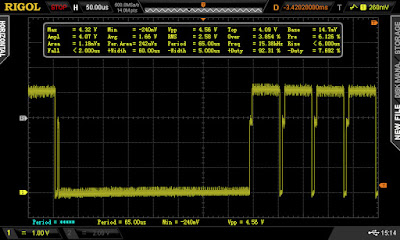Why a ZX81 and not another computer will you tell me. Well, because it was the first computer I held in my hands. It was in 1983, I discovered microcomputing in magazines and had never seen it for real.
In my memories, it was in the summer of 1983, I was on vacation with my parents and, in a lost town in Burgundy, Montceau-Les-Mines, when I entered a small electronics shop to try to buy a TMS1122, I saw a working ZX81 displayed on a shelf. It was a real emotion for me to hold in my hands this little thing that everyone was talking about.
This is how I received my vaccine not Omicron, but 'Oh-Micro'! Since that date, I have never owned a ZX81. As we are now in 2022, I wanted to finally have a copy before the 40th anniversary of this meeting in Burgundy!
And here is MY ZX81, in superb condition:
The question is, does it work? I don't have any adapter to connect this ZX to a current screen. At first, I therefore contented myself with dismantling it to check whether it showed signs of intervention.
So I disassembled the machine:
At this point, I tested the power supply. The 5V is present and the integrated circuits heat up in a 'normal' way. I also checked the temperature of the Ferranti ULA circuit which is reputed to heat up enormously. After about ten minutes of operation, I obtain a temperature of 70°C, which indeed is a little hot, but not excessive.
The 5V regulator also heats up but in a reasonable way. These first observations lead me to think that the machine 'must' function normally.
After meticulous examination of the electronic board, I nevertheless noted that some weldings were carried out around the capacitor of the power supply:
We can clearly see the traces of soldering also on this side of the printed circuit. The power supply onnector has even been slightly melted with the soldering iron:
In order to get a more precise idea of the operating condition of this ZX, I simply examined the video signal at the output of the Ferranti circuit. It's pretty easy to do, just probe the track near the TV modulator:
On the following picture we can clearly see the horizontal synchronization signal:
And now with the vertical sync signal:
So all of this seems to match what I've been able to find on the internet about the ZX81's video output:
 |
| trastero.speccy.org |
But then, what could be the problem with this ZX? Because it must have one since it was dismantled in the past. So I don't know if that's it, but the flexible circuit board connecting the keyboard is obviously cut:
It is a great classic of the ZX81. I don't know yet what I'm going to do. I know it's extremely risky to attempt a repair with a soldering iron. In fact, it never works. As the plastic is cut, it is also not possible to repair the tracks with conductive paint. The best would be to replace this keyboard. I have seen announcements in the past about new keyboards being available. I'll look there.
Not available at this time but...
And then, what would be interesting, would be to connect this small machine to a small LCD or VGA screen. And precisely, I found a small project on GitHub that could be suitable:
Last but not last, the ZX81 was an English computer, as well as the 6502-based BBC machines made by Acorn, as well as the line of Acorn-specific computers with RISC ARM processors that power Raspberry boards today: history of English computing continues...


























